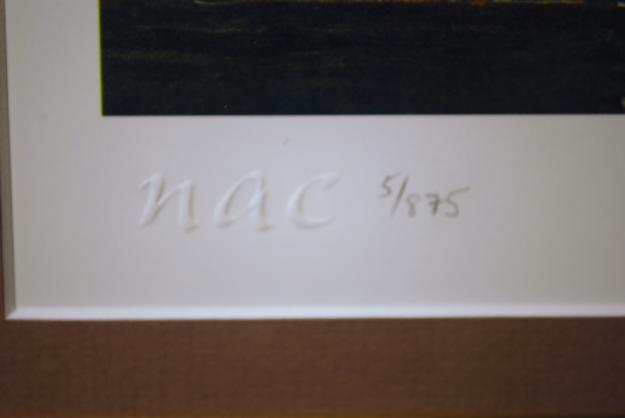The world is full of numbered prints. People bought them at high prices a decade, or two or three, ago, because they were led to believe the prints would go up in value over time since they are “limited editions.” What happened, as you will soon see, is the artists or their marketing directors got greedy. In theory, it all sounds so great, so what happened? Read on …
If I had just $1 for every numbered print I have seen in my career, I could probably retire tomorrow. A well-known artist decides to mass produce their work and make more money by using prints (or strikes) of one original work. More money, less work. All they have to do is pencil sign and number each print. Typically, you see what looks like a fraction in pencil, for example 12/500, found in one of the bottom corners of the print. This means the print you have is the 12th strike out of an edition of 500. It is believed that the lower the number, the sharper the strike, so it is more desirable to collectors. If you had 452/500, it is thought that the strike is getting worn and the image will not be as good.
But there are only 500 of them. Aren’t they worth something? Of course. They are worth what someone is willing to give you for them. Print media has certainly experienced a serious downturn in value over the last several years. Artists shot themselves in the foot by producing too many of them. Let’s not forget that the same image also has matching non-numbered prints, stationery, place-mats, mouse pads, cocktail napkins, key chains, plaques, etc. You get the point … it always comes down to the law of supply and demand. They mass produce until they meet the demand. Then the demand bottoms out and the marketplace is still saturated with these items. Then the price heads south just like so many other collectibles: Beanie Babies, collector plates, Hummels, etc.
This is the trend we’ve been seeing for years and will probably continue to see. The economy, the older generation passing away, the younger kids not wanting them, collectors dying and their collections saturating the market further … all of this comes together and lowers values of these pieces. They just aren’t selling well on the secondary market.
There are several famous artists out there whose numbered prints once sold for tens of thousands of dollars. When we search for them on the internet, one can plainly see that some misinformed seller actually still thinks they can get $10K for it. I know the latest hammer price is $250, if that. Could a print still sell for a lot of money? Yes, if a collector is searching for that one piece; but that collector is savvy and knows what the current prices are and will not pay wildly for it, as they once did.
It’s no one’s fault. It made sense to invest in these things at the time and it sounded like a sure thing. But as with all things that sound too good to be true … it usually is.
The Estate Lady Tip of the Day: Always buy what you like and what brings you pleasure. You might be stuck with it for a while. Before I buy something, I ask myself if I’m absolutely crazy about the piece. If not, I walk away. My daughter won’t want it someday, because she doesn’t want it now, and most children do not change their minds with the passage of time.
©2013 The Estate Lady®





